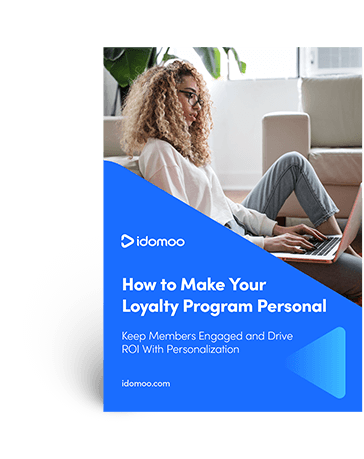It’s hard to overplay the importance of starting your customers off on the right foot. But while brands have come a long way in realizing the value of customer onboarding, there’s still room for improvement. Over 90% of customers feel that the companies they buy from “could do better” when it comes to onboarding new users.
Your customers’ onboarding experience has to be so much more than a basic welcome gesture. It should set your customers up for success which, in turn, will boost customer satisfaction, loyalty and your bottom line.
So how do you ensure that early touchpoints with your customers have those outcomes? Well, it starts with a rock-solid understanding of what customer onboarding is, why it matters and the essential components of a typical onboarding experience. Here’s everything you need to know.
What Is Customer Onboarding?
Customer onboarding is the process of helping customers become comfortable with using your product or service.
It’s the art of ensuring customer success by providing them with the messages, tools and resources they need to use your offering confidently and successfully right from the start. And don’t forget to congratulate them on making the right choice by becoming a customer!
In short, you could think of customer onboarding as a friendly welcome and a how-to user manual rolled into one.
Why Customer Onboarding Matters
A successful customer onboarding experience doesn’t just make your business look good — it helps you thrive. Customer onboarding is an essential element of the customer journey and, when done well, can benefit your business in several ways.
Reemphasize Product Value
At the core, your relationship with your customer is dependent on you delivering value through your product. If a customer fails to see the value that you add to their lives, it’s game over. Your customer will likely move on and leave you behind. Onboarding helps prevent customer churn by showcasing the full value of your product to new clients as soon as possible.
When you outline all the ways that your offering can solve their problem or improve their life, it gives your customers a reason to keep doing business with you, especially if you do so in a way that’s personalized, emphasizing the features that are most relevant to their goals.
Ensure Customer Success
One recent survey found that more than half (55%) of people say they’ve returned a product because they didn’t fully understand how to use it.
In other words, you can’t assume that your customers will ask for help if they need it. A thorough onboarding process ensures your customers know how to use your product or service the way it should be used, resulting in happy customers early on.
Strengthen Loyalty
A successful onboarding program can also reduce your customer churn rate and boost customer retention by strengthening the loyalty of your customer base. A whopping 86% of people say they’d be more likely to stay loyal to a business that invests in onboarding content that welcomes and educates them after they’ve purchased.
Get started: Speaking of churn, we wrote a whole guide on how to calculate retention rate. Check it out. It covers a step-by-step formula plus what to do after you have your churn or retention rate figured out. If you want to improve customer loyalty, benchmarking retention is the first step.
Inspire Recommendations and Referrals
A positive customer experience and strengthened loyalty can push customers through the customer lifecycle towards advocacy, the stage where they recommend your products and refer others to your brand.
One global survey found that:
- When asked what being “loyal” to a brand means, 40.9% of respondents answered, “I recommend the brand to others.”
- When asked what they would do for a brand they’re loyal to, 37.9% said they would recommend the brand to others.
Reduce Strain on Customer Support
New customers tend to have a lot of questions. Proactively answering common questions during the onboarding process can help reduce the strain on your customer success teams so that they can focus on solving more complex customer issues. In fact, one of our clients saw 54% fewer support calls as a direct result of onboarding campaigns.
Post on
Encourage Additional Purchases
When done tastefully, the onboarding experience can also be used to upsell or cross-sell other features, services and products. Think product walkthroughs that briefly mention an available upgrade or welcome messages that promote an add-on service.
Onboarding also paves the way for more purchases later on. Customers spend more and make more purchases from brands they’re loyal to, and as we discussed above, good onboarding lays the foundation for strong loyalty.
What To Include in Your Customer’s Onboarding Experience
Your customer onboarding strategy can use a variety of different elements — messages, content, tools, and resources — to set your new customers up for success. While the actual flow of onboarding should depend on what each customer needs and their preferences, the typical customer onboarding experience often includes the following elements.
A Welcome Message
Kickoff the new customer relationship with a personalized welcome. This message is an expected correspondence for consumers and will set the tone for your relationship with them.
To not overwhelm them with information, keep things simple and brief. For the most part, your welcome message should:
- Thank them for choosing your brand
- Emphasize the value of your product or service
- Provide them with the basic information they need to get started
- Let them know what to expect from their onboarding journey moving forward
How you choose to deliver your welcome message is up to you. A welcome email is arguably the most common method, but text messaging is also a popular channel. If your product is an app or platform, you can even leverage those in-app communication channels (notifications, pop-ups, etc.) to relay the welcome.
Video works with any of these mediums, from SMS to email, with 97% of people believing that video is an effective tool to welcome and educate new clients. Combining visuals with audio and text, a personalized welcome video, like the one below by SelectHealth, can help get your message across more clearly.
A Guided Tutorial
Following the welcome message, a guided tutorial or product tour that walks your customers through the setup process is often a good idea.
The tutorial should be fairly simple and high-level. Rather than going into detail about every single function that your product or service offers, you’ll want to walk your customer through the most significant or relevant features.
Ideally, tutorials should be tailored to the individual needs of each user. For many companies, this will mean creating unique tutorials or tours for each customer segment. A customer that’s purchased cloud storage for personal use may get a different tutorial than a manager that purchases the storage for their employees, for instance. There’s a scalable way to do this — more on that below.
Your tutorial can take many forms, such as an interactive setup wizard, detailed webinars, or an onboarding checklist that breaks everything down via text. Of course, video explainers also work well here. Check out how Wren Kitchens uses video to walk new customers through what to expect from their “Free Home Measure” service and how to prepare for it.
Note that, while it’s essential to have tutorials created and readily available, this step also needs to be optional for the customer. Ensure that your customers are never forced to sit through an unwanted onboarding experience by allowing users to skip or decide for themselves whether they want to use the tutorial.
Tip: A great way to do this with video is to make your video interactive, dividing it into chapters that let viewers skip ahead or choose where they want to head next.
If you do need different tutorials for multiple customer segments or products purchased, try a modular format when creating your video. One of our insurance clients did this, creating a video segment for each product. Then they used our platform to automatically create videos with just those product segments, creating a complete and personalized tour for every new customer.
Access to a Knowledge Base
A knowledge base refers to an online library of helpful information about your product or service. Frequently asked questions, help centers, community discussion boards, user guides and so on all fall into this category.
Having a knowledge base empowers your customers to solve common issues quickly on their own, so it’s important to inform new customers about how to find this tool during their onboarding. You may not be able to answer every question through a welcome message or tutorial, but you can give them the resources they need to self-serve early on in their journey.
Promotion of Additional Features
Depending on your business model, there may also be opportunities for you to promote different features, services, and plans during the onboarding process.
Is there a premium functionality that your customer may find useful? Is there a complementary service that would make their lives even easier? Consider incorporating mentions of those solutions throughout the customer onboarding experience, such as by adding a simple note in the welcome message or adding a pop-up in the setup wizard.
At the same time, be careful not to overload your customers with promotional content. Don’t stray from the main goal of onboarding, which is to get your customers comfortable with your offering. Promotions should be seamless and not distract from the learning process.
Any upselling or cross-selling should also be personalized to each customer. Only recommend relevant products they haven’t already purchased. Over 30% of consumers find it annoying when a brand doesn’t acknowledge what they’ve already purchased and more than 42% were annoyed when recommendations weren’t appropriate for them and their tastes.
Routine Check-Ins
Remember that onboarding is not a one-and-done task. There should be ongoing communication with new clients to ensure that everything is going well, even beyond the first time they use your offering.
Show your customers you care about their progress by establishing routine check-ins. Send a follow-up to see how they’re doing and if there are any pain points you can help solve. Reach out with quick tips and hacks that may help them get more value from your product. You can even directly ask for valuable feedback on your onboarding process and product.
Tip: Add a survey to the end of your onboarding video. It’s a great way to get feedback right then while it’s fresh in their mind.
Relevant Updates
As internal or external changes occur, you’ll need to get your customers familiar with those new developments, whether that’s a new feature added to your product, a company management change, or your customer’s plan ending.
Getting your customers up-to-speed on these updates will require further communications and often updated resources as well. This could be in the form of a brief email, a knowledge base update or a Personalized Video. Watch how Bupa provided timely updates related to their customer’s upcoming health insurance renewal.
The important thing here is that you continue to keep your customers in the loop. Onboarding your customers doesn’t stop once after that initial “new customer phase.” Change is inevitable. Ensure that both new and existing customers remain comfortable with your product and can use it successfully, even when major updates and changes occur.
The Importance of a Human Approach
While the customer onboarding process involves various components, the common thread that should run throughout the onboarding experience is a dedication to treating each customer like the unique individual they are.
While it may be tempting to view every new customer as coming in with a blank slate for you to fill with information, the reality is that they each have different backgrounds, expectations and problems that need to be addressed.
That’s why it’s so important to take a human approach to customer onboarding and personalize the customer experience, especially when your CX is digital and physically lacks that 1:1 human interaction. Only when you see your customers and their problems as unique can you effectively create communications and resources that incorporate personal details and solutions.
Take Onboarding to the Next Level With Personalized Video
The days of a generic welcome email are long over. Your customer onboarding program needs to bring just as much value as your offering does, and the best way to ensure that is by crafting a meaningful, personalized experience that focuses on the individual.
Throughout the onboarding process, Personalized Video upgrades the customer experience. On its own, video is already a powerful tool of communication that improves understanding. Add personalization to the mix, and you boost the relevance and appeal of your message along with customer satisfaction.
Just take a look at what our clients were able to achieve by incorporating Personalized Video into their customer onboarding campaigns:
- 10x more customer engagement
- +31 NPS points
- 54% fewer support calls
Want to learn more? Click the button below to have an Idomoo expert walk you through how Personalized Video can improve your onboarding efforts.






